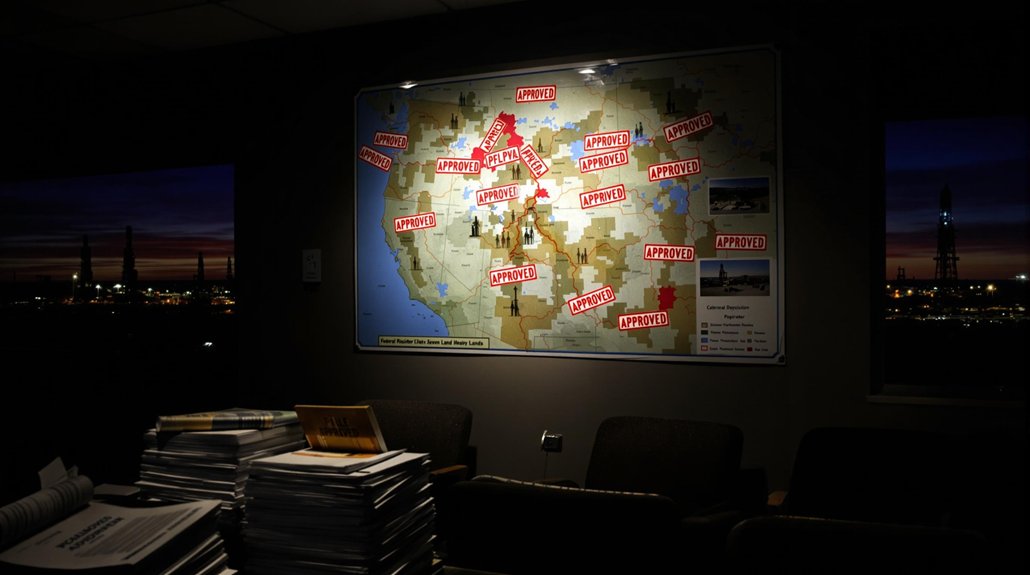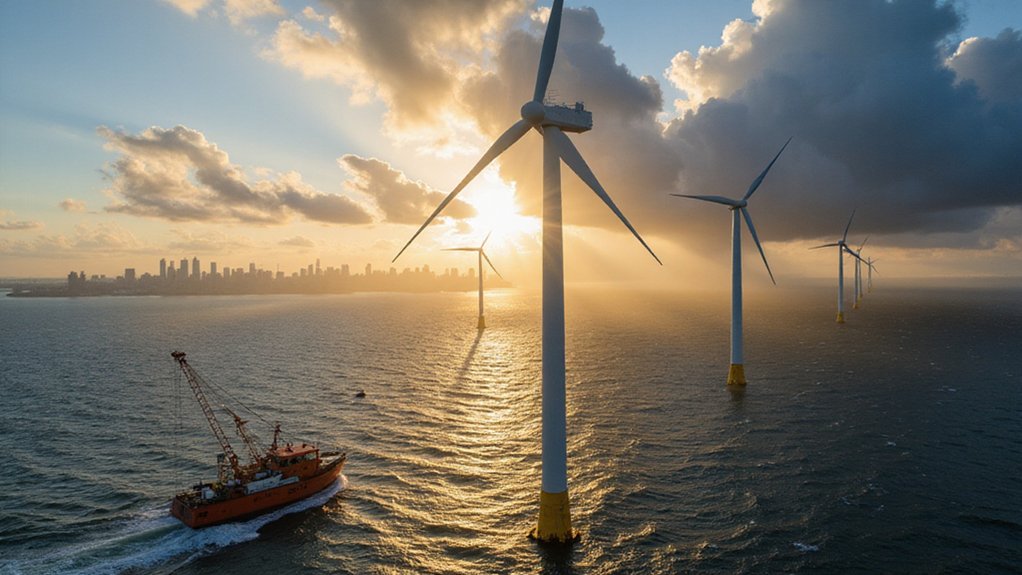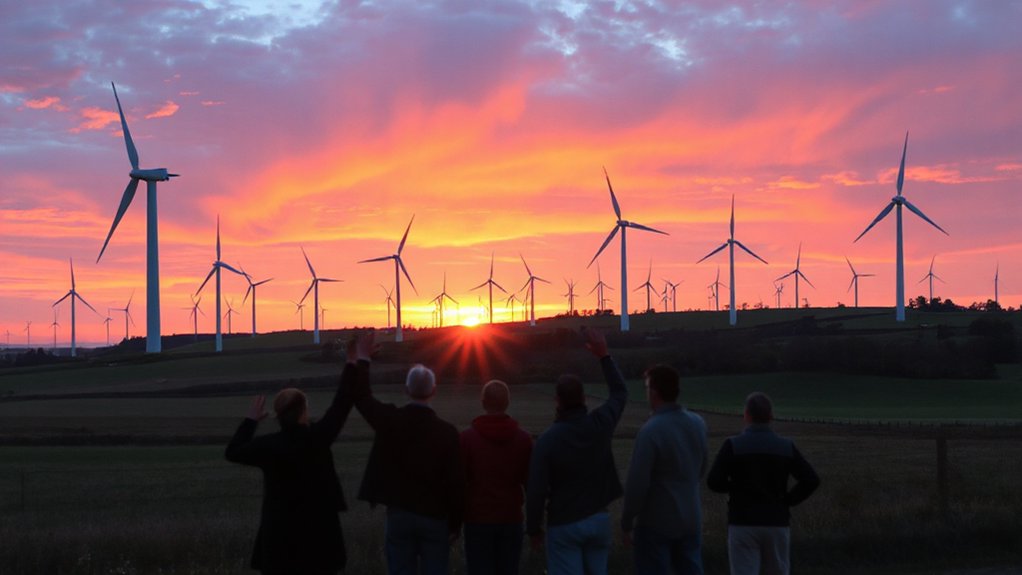As the world races to replace fossil fuels with clean energy, scientists are discovering that climate change itself could slow down wind power‘s growth. The United Nations’ climate panel projects average wind speeds could drop by up to 10% before 2100, creating longer periods when turbines can’t generate electricity.
Climate change could reduce wind speeds by 10%, threatening the growth of wind power generation.
Scientists call this trend “global stilling.” It’s happening because the temperature difference between Earth’s poles and tropics is getting smaller. When that difference shrinks, winds become weaker. About 11% of wind farms worldwide might see their wind speeds drop by 5% if countries control emissions well. That number jumps to 18% if emissions stay high.
These “wind droughts” create big problems for power grids that depend on turbines. The United Kingdom gets 29% of its electricity from wind, while the European Union gets 18% and the United States gets 10%. In September 2021, wind’s contribution to the UK electricity mix plummeted to just 2%, forcing the country to restart coal plants. Countries plan to double their wind power by 2030, but slower winds could make those goals harder to reach.
Climate change isn’t just making winds weaker. It’s also making storms stronger and more dangerous. Wind turbines in places like Texas face higher risks from extreme weather. Lightning strikes, intense heat, and powerful storm winds can damage turbines and force them offline. High temperatures can shorten a turbine’s life and make it work less efficiently. Extreme weather events have become more frequent due to rising global temperatures, posing additional challenges to renewable infrastructure.
These changes worry investors and power companies. They’re developing new insurance plans to protect against unpredictable winds. Companies might need to spend more money upgrading turbines to handle extreme weather. Some older turbines will need replacement to survive future storms.
Engineers are working on solutions. They’re using better weather forecasting to find the best spots for new wind farms. New turbine designs can handle extreme conditions better. Power grids need more battery storage to save electricity when winds are strong. A 10% drop in wind speeds could slash energy production from turbines by 30%, making these storage solutions even more critical.
The wind power industry faces a strange challenge. The same climate change that makes renewable energy necessary also makes it harder to produce. As weather patterns shift, countries must adapt their clean energy plans to match nature’s changing winds.
References
- https://www.preventionweb.net/news/climate-change-and-wind-power-winds-change
- https://e360.yale.edu/features/global-stilling-is-climate-change-slowing-the-worlds-wind
- https://earth.org/how-climate-changes-influence-on-wind-patterns-is-affecting-the-wind-power-industry/
- https://www.energy.gov/eere/wind/articles/how-wind-can-help-us-breathe-easier
- https://www.swissre.com/institute/research/topics-and-risk-dialogues/climate-and-natural-catastrophe-risk/climate-change-wind-power.html








